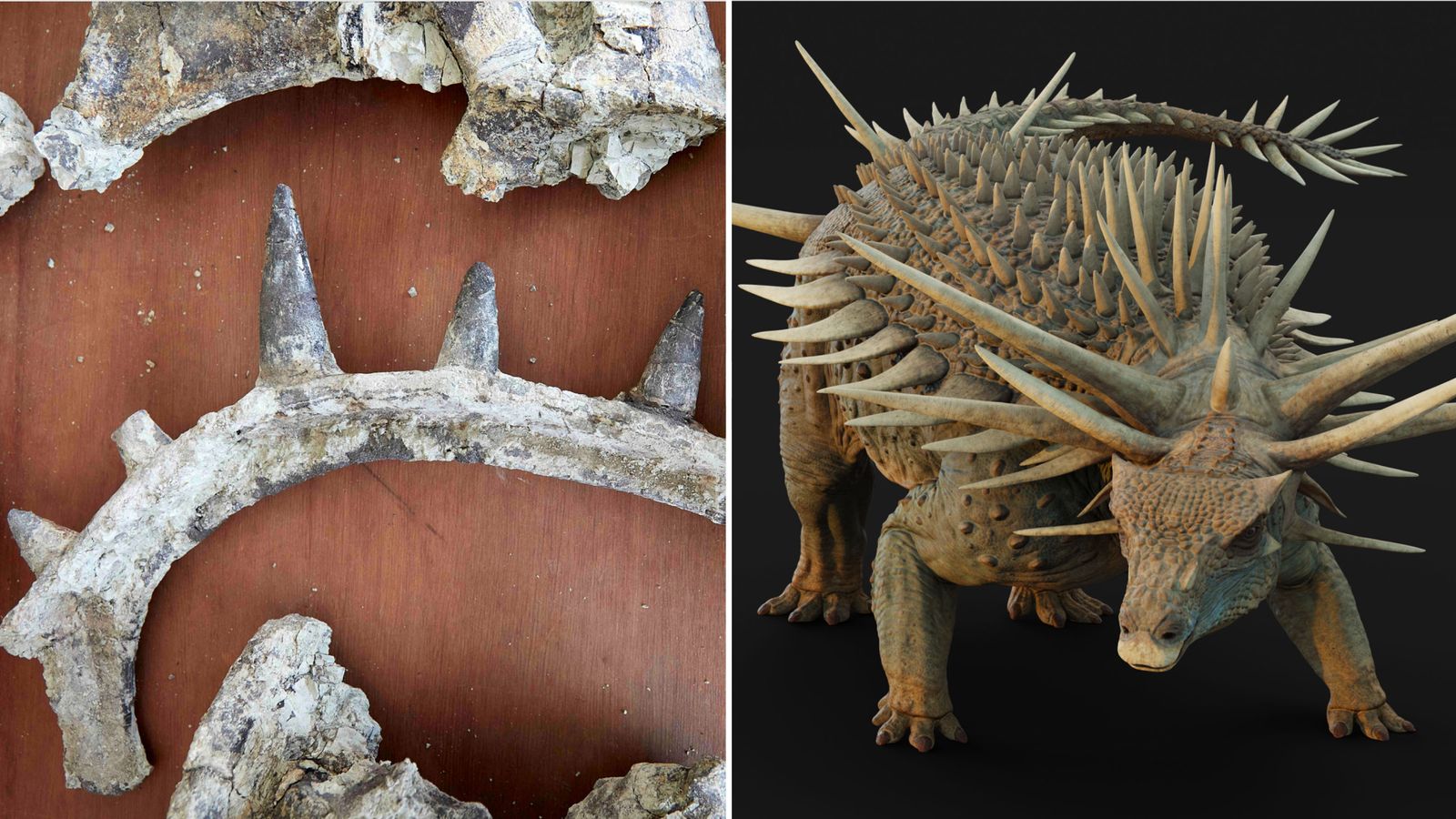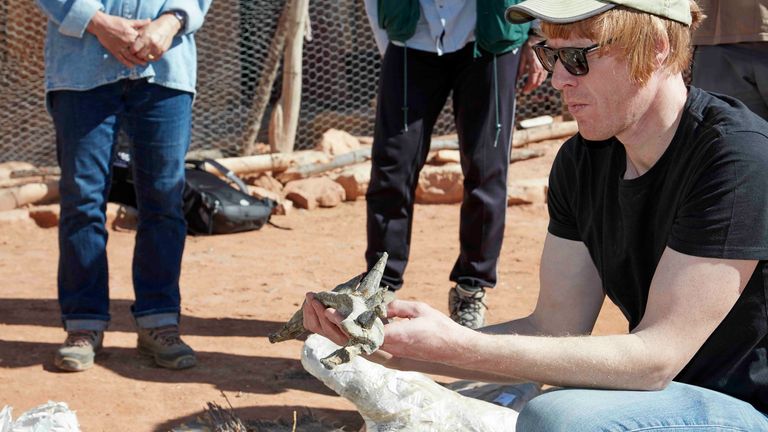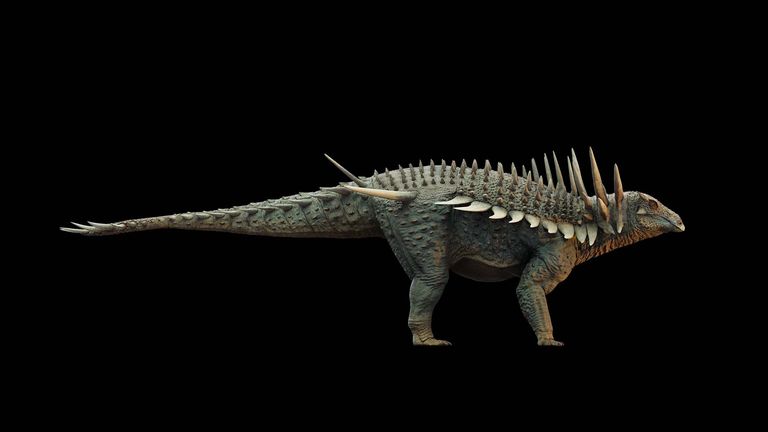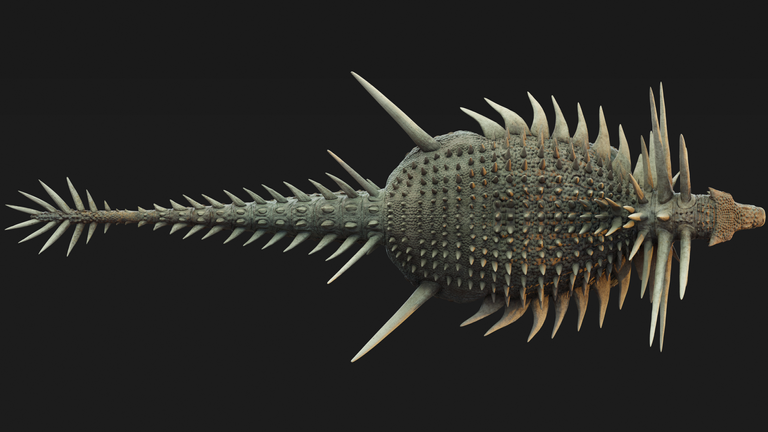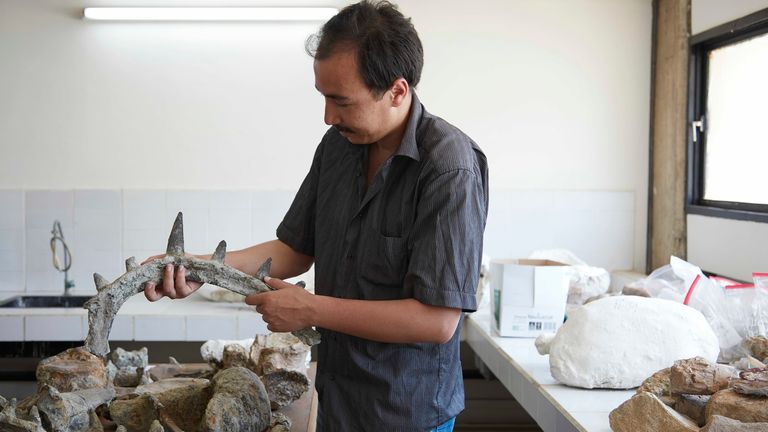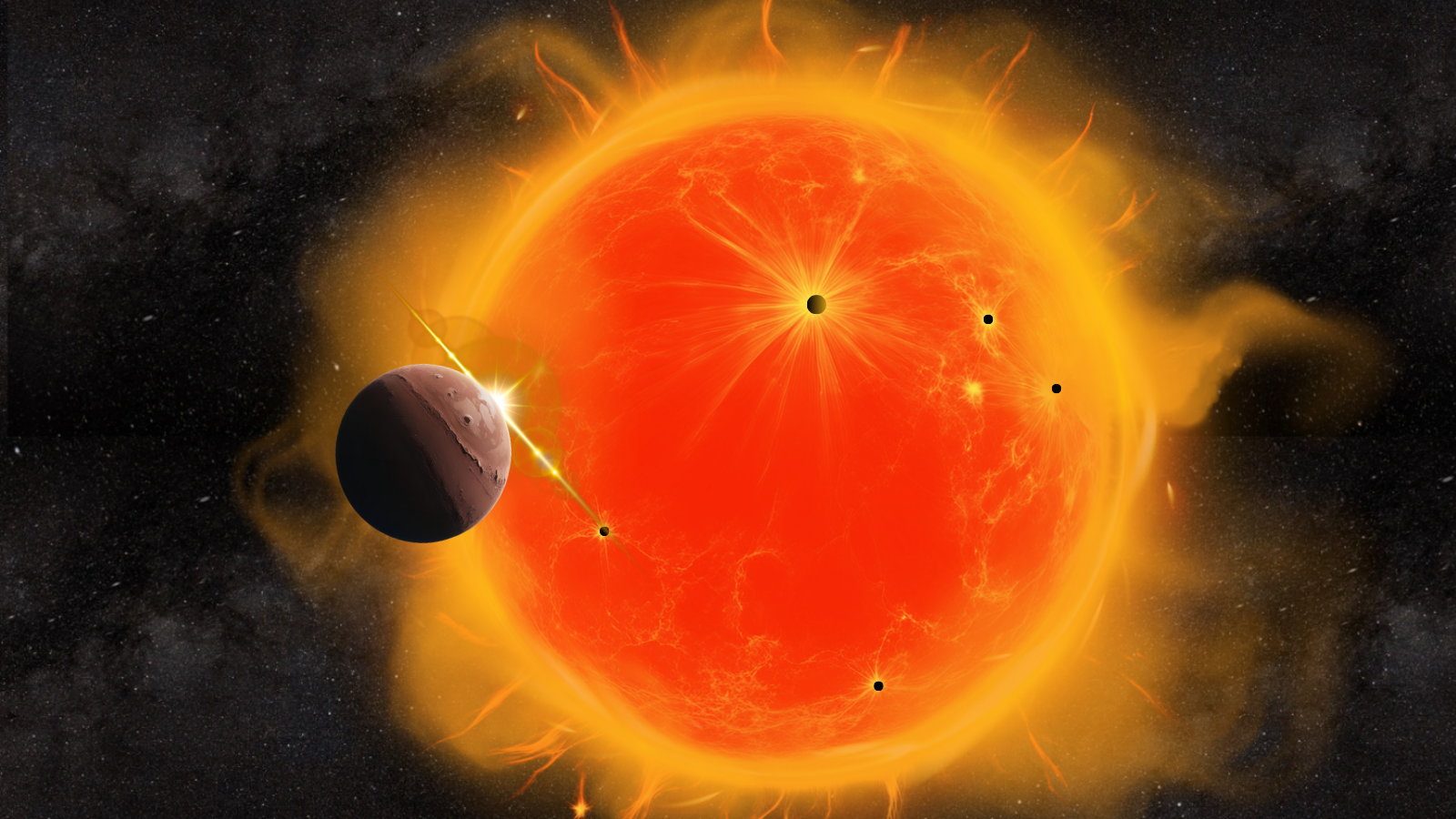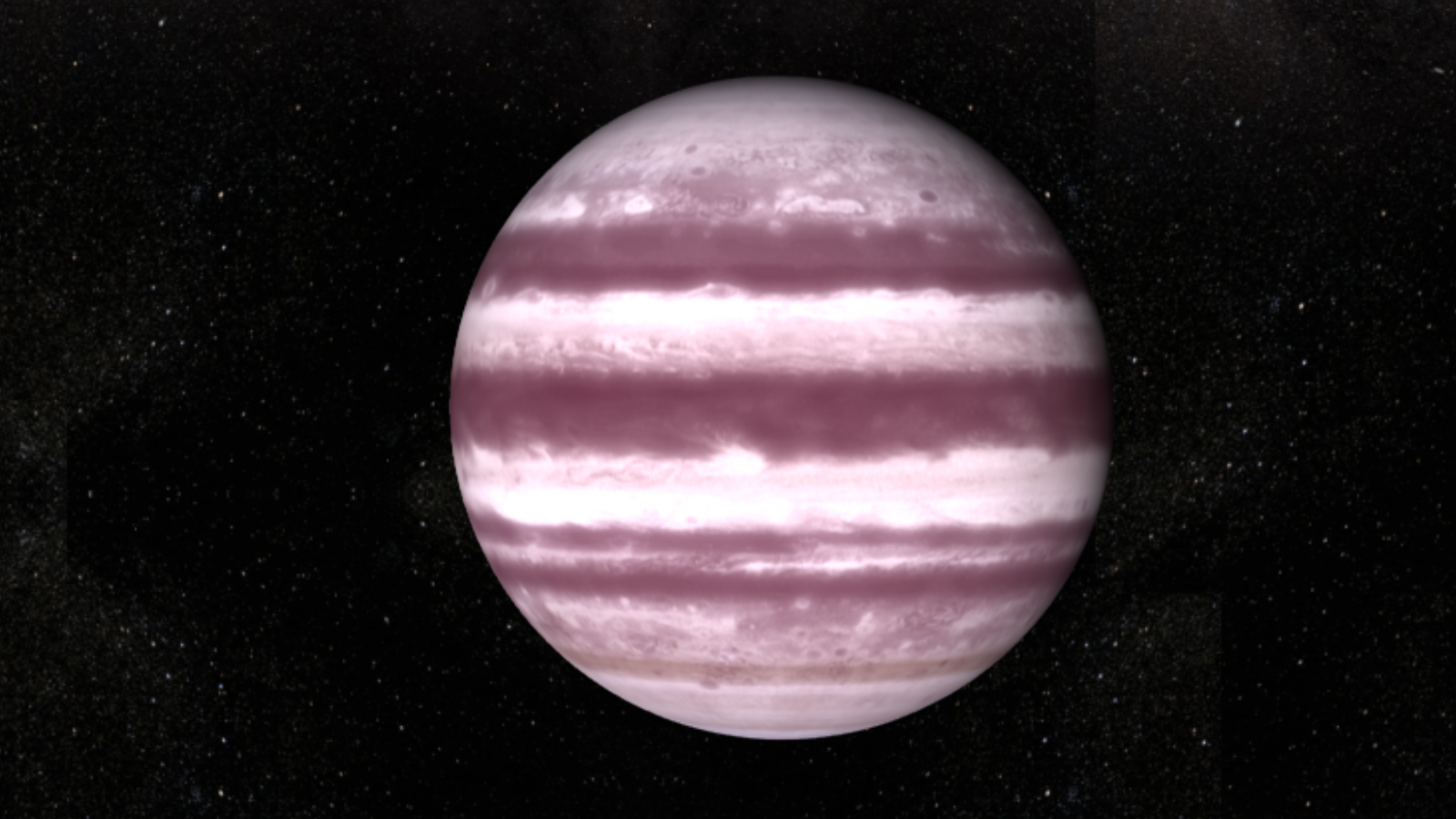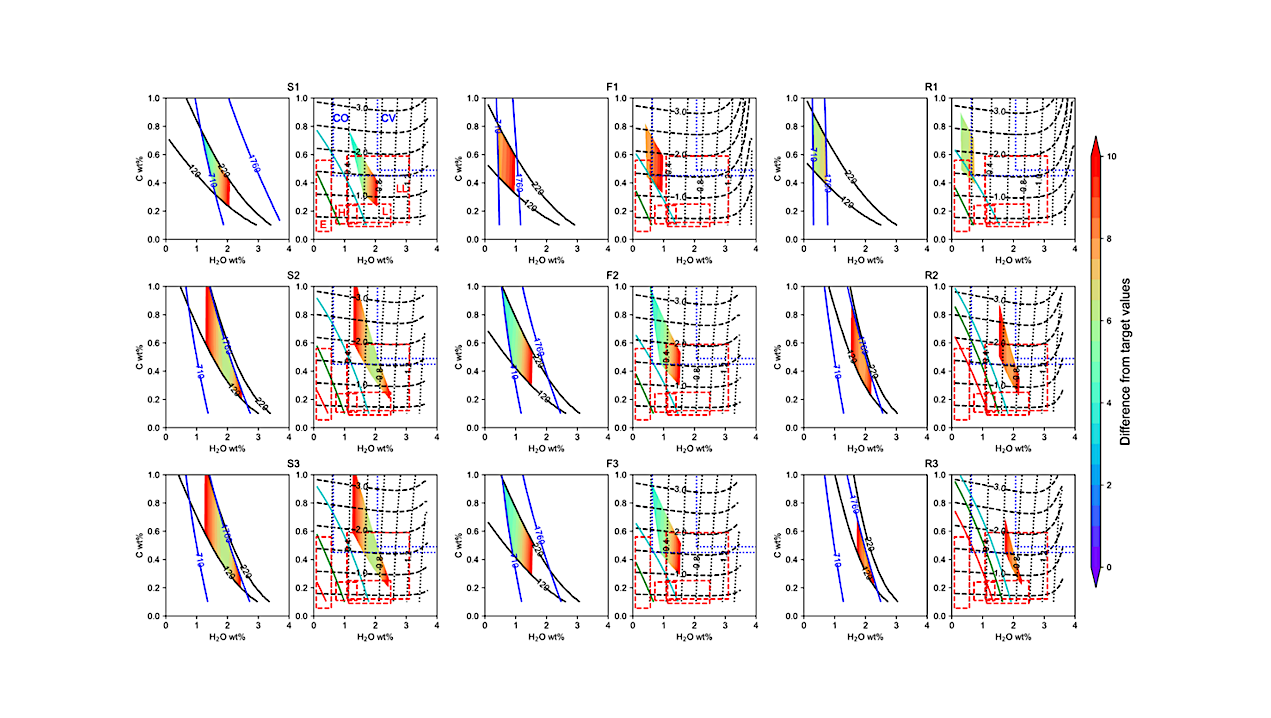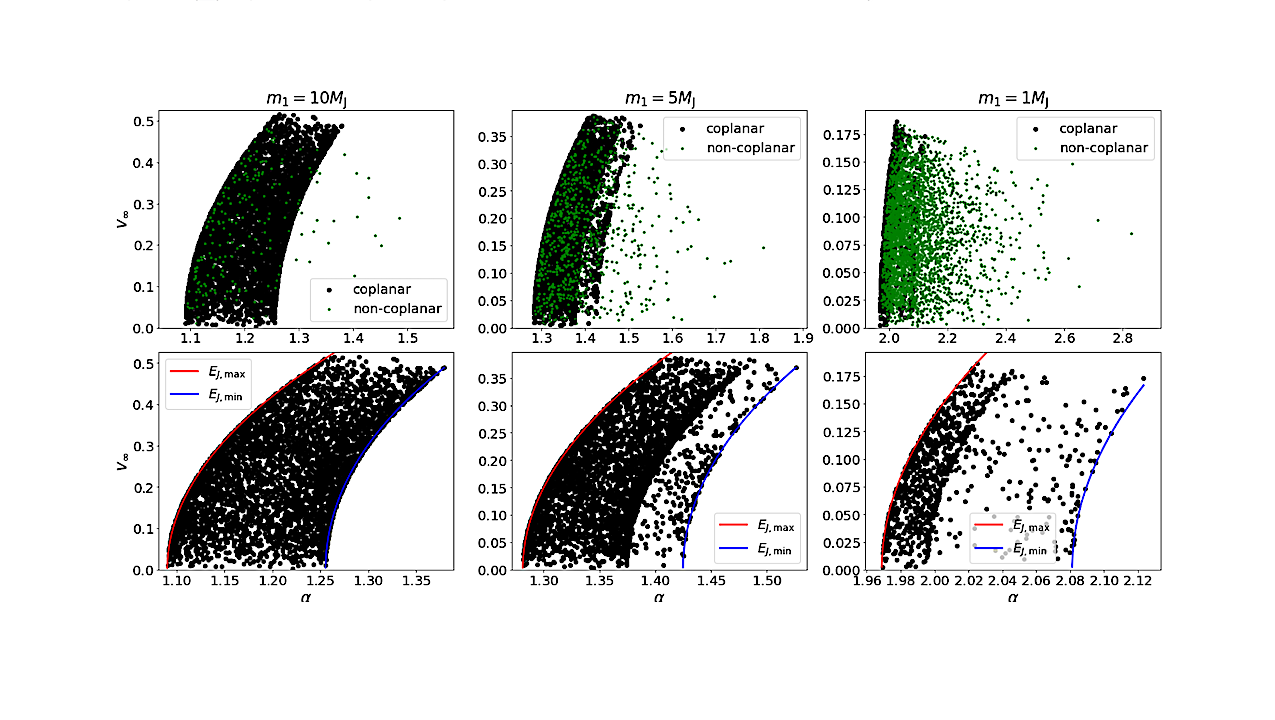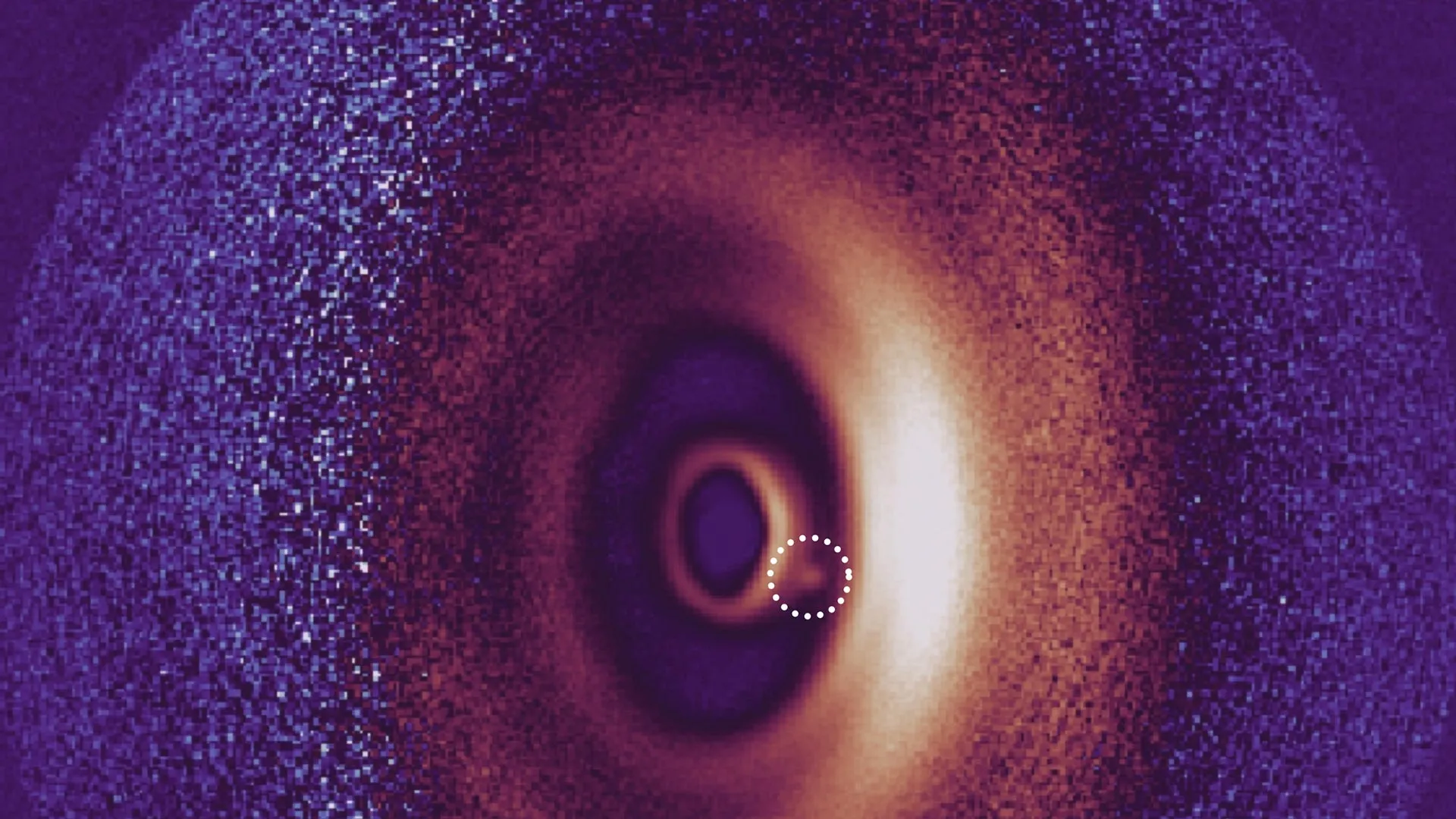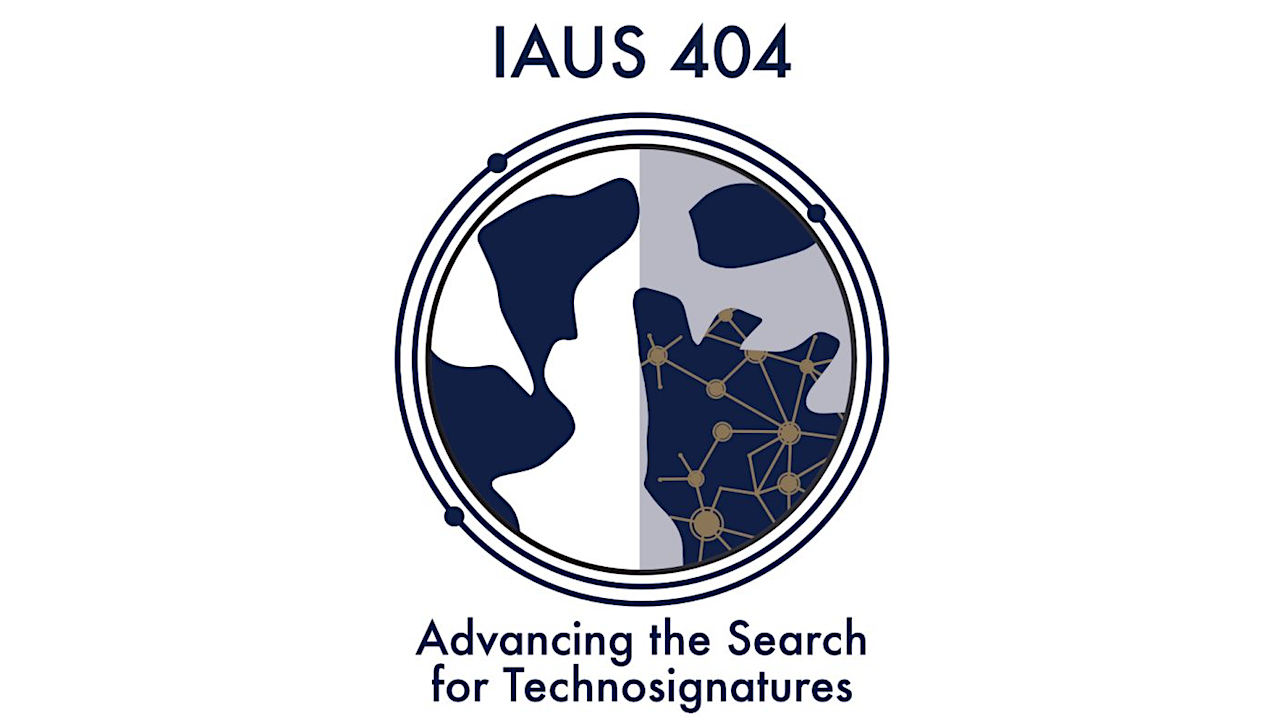A “weird”, heavily armoured dinosaur just became stranger than palaeontologists even realised, following the discovery of new fossils.
The Spicomellus, a 165-million-year-old type of armoured dinosaur famous for its tail weapon, was covered in shields and huge spikes, with some even fused to its skeleton, scientists have discovered.
“We’ve got this tail weapon, we’ve this shield over its pelvis, and we’ve all these crazy spikes,” Professor Susannah Maidment, a palaeontologist at the Natural History Museum, told Sky News.
“None of those features would we have predicted to see in the earliest Ankylosaur.”
She co-led the research, which is now published in the science journal Nature.
The new fossils, discovered in the Moroccan Atlas mountain town of Boulemane, revealed spikes of up to one metre long around the dinosaur’s head, along with plates protecting its throat.
On every rib, it had foot-long spikes fused to its skeleton, leading to questions over how its muscles were formed along its ribcage.
Its spiked ribs are a protective feature not seen in any other vertebrate, living or extinct, and the dinosaur’s distinctive armour may have been used to attract mates, as well as for defence.
“Seeing and studying the Spicomellus fossils for the first time was spine-tingling,” said the project’s co-lead, Professor Richard Butler of the University of Birmingham.
“We just couldn’t believe how weird it was and how unlike any other dinosaur, or indeed any other animal we know of alive or extinct.
“It turns much of what we thought we knew about ankylosaurs and their evolution on its head and demonstrates just how much there still is to learn about dinosaurs”.
It is an early member of the ankylosaur family and appears to have had a tail weapon around 35 million years earlier than scientists had previously realised.
“We have these really kind of tantalising fragments of ankylosaurs in the Middle Jurassic [period] already,” said Professor Maidment.
“We knew that they were around, we just have a very poor fossil record from that time period.”
This is the first “really good” skeleton of an ankylosaur from that time, according to Professor Maidment.
“The amazing thing about it is that it is absolutely covered in these incredibly elaborate spikes all over its body.”
Professor Maidment was part of the team that excavated the dinosaur, working with the University of Fez in Morocco.
When she got to the farmer’s house, who had spotted the fossils initially during flash flooding, she thought: “This is the highlight of my career. I’m never going to see anything as crazy as this ever again.”
Read more on Sky News:
Israel ‘killing a lot of journalists’
Three die in helicopter crash
SpaceX completes spectacular test flight
The farmer had been pulling out fossils when they appeared, worried that more flooding would wash them away again, and then saving them in his house for the palaeontologists.
“We wouldn’t have any fossils at all if it wasn’t for him,” said Professor Maidment.
The farmer took her team to the hillside bank where he’d found the fossils, and they began digging.
Soon, they found the bone layer and were able to excavate even more of the specimen themselves.
This is the only ankylosaur known in Africa, and Professor Maidment says palaeontologists have “hardly scratched the surface” of the continent.
Because it is a fairly new region to dig in, her team are battling against black market fossil smugglers, excavating and selling precious dinosaur bones without licenses all over the world.
“The last time I went back to the site,” she said, “there were huge holes everywhere”, where the illegal diggers had been.
“They had dug huge holes, and we’re seeing material pop up on the commercial market.”
Part of the Natural History Museum’s plan to find more specimens like the Spicomellus is to work with the local community to build protections for the areas and put an end to illegal fossil smuggling.
